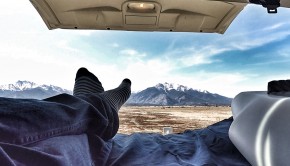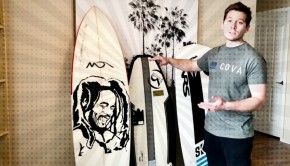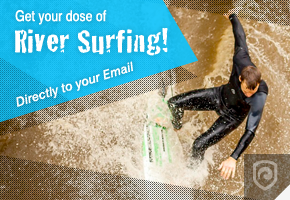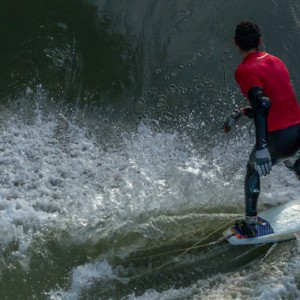River Surfing Tutorial for Beginners
This Beginners Guide to River Surfing covers all the basics from river surfing equipment, finding waves all the way to how to enter a river wave.
What Equipment You Need
As a starter, here is is the most essential gear advice on how to make the right choices when buying your first river surfing equipment.
River Surfboard
Your board is important, without it you cant surf. The size of your board will be impacted by a few things. First, you will want a board that has enough volume to float your body weight. Second, what waves will you be surfing it on? You want to make sure you get a board that will fit into the wave you are surfing. In most cases your are going to want to stay under 6′. If you are surfing a high performance river wave like the Boise, Denver or Bend wave you can get away with a low volume board even if you are a heavier rider.
Helmet
I always wear a helmet because you never know what could happen. Check out the River Surfing Helmets Buying Guide where you will find everything that you need to know to make the right choice.
PFD / Life Jacket
Personal Floatation Device. This will help you save energy on the swims in between surfs. It is also helpful in the event you need to be recued because it will keep you floating above the waterline and give rescuers something to hold onto.
Leash
Leashes are expectable under one condition: They need to be attached to a quick release of some kind. Otherwise leashes can be a death trap! Before you go out, make yourself familiar with leash safety.
Footwear and Neoprene
Depending on the water and weather temp, wetsuits are a great idea. Wearing a wetsuit will allow you to surf longer and prevent hypothermia. Depending on the river depth you may want to wear surf booties. They are thick enough to provide a little protection and thin enough that you can still feel the board beneath your feet.
Finding River Waves
Visit Your Local Surf Shop
Finding river waves is easier than you might think. You can go to your local kayak, SUP or inland surf shop to find out where local spots are.
Go Online
You can even youtube river surfing in your area to find out about new waves. Another way is to search online for any info related to rafting and playboating. Another great way to find suitable waves is Google Earth.
Use the River Wave Map
Use the worldwide river surfing map or browse through the most comprehensive list of river waves here on Riverbreak.
Catching a River Wave
Catching a river wave is the hardest part about river surfing. There are a few different ways you can catch a river wave. The techniques may vary depending on what wave you are trying to catch.
Dropping in
Dropping into a river wave is the closest feeling to paddling into an ocean wave. To do this you will need to enter the river some distance above the river wave. Hop into the water and paddle up river to position yourself with the pocket of the river wave. Once you start to drop onto the river wave continue to paddle up river until you feel the board catch the wave.
Jumping in from the side
To jump into a wave from the side you need to position yourself nest to the wave on rocks or in the water. Make sure you have a good solid foundation to jump from. You will be facing up river next to the wave. Glide out onto the wave on the board in a prone position. Once on the wave take a few paddle strokes to ensure you catch the wave.
Acid dropping
This is one of the most fun and difficult ways to catch a river wave. You will need to position yourself on a solid platform or rock next to the wave. Face up river holding your board in your hand with the deck facing your body. You want to glide onto the board with your feet as smooth as possible with forward momentum onto the wave. Once you hit the pocket of the wave apply pressure with your front foot or back foot to straighten out on the wave.
Risks and Safety Measures
Be aware that there are significant risks involved in river surfing, so make sure you are familiar with the risks and safety measures in river surfing. Always ask local surfers, check the river at low-flow and look for any potential dangers upriver and downriver before you go in. Also, check out our information on leash safety.
Surf more, surf better & stay safe with these river surfing tips!
Don’t take it too seriously and have fun! Catching a wave and becoming comfortable will take some time. Hit me up on my social media with any questions.
Instagram: @alexandermauer
facebook.com/alex.mauer1
facebook.com/alexmauersup

















